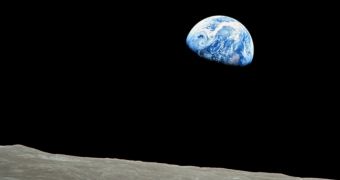Almost 40 years ago, the Apollo 11 mission allowed the first humans to land on the Moon (Neil Armstrong and Buzz Aldrin, on July 20, 1969), after a four days space trip, marking one of the most important achievements in the history of mankind. Now NASA intends to build a human colony at the south pole of the Moon, somewhere after the year 2020, colony that will initially host only scientists. Moreover, together with the British National Space Centre (BNSC), NASA wants to deploy some kind of mobile phone network that will allow people who (as odd as this may sound) live on the Moon to make phone calls and send text messages to Earth. Well, we should have expected a thing like this, right?
The mission that NASA and BNSC are planning is scheduled for 2012 and it was named MoonLITE. It involves more than just providing phone signal on our natural satellite, but we're mainly interested in this aspect.
Mobile phones are now among the most common devices on Earth - only in 2007, the total number of sold handsets raised to more than 1 billion. Knowing this, we can assume that, overall, there are about 2 billion functional units around the globe, spread in every country and every region, from the North American Rocky Mountains to Port Vila in Vanuatu.
Since it's obvious that cell phones are must-have tools for us humans, in the far future, when people will live on the Moon as they do now on Earth (not exactly in the same way, but you get the idea), I see great possibilities for the mobile industry leaders. Apple, for example, could bring a new handset called iMoon, Nokia could make a Nokia Moon Navigator and Sony Ericsson might come with a cool Cybermoon series that allows you to take high-res pictures of the beautiful and blue Earth, straight from the Moon. Can't wait! If I get to live until then, of course.

 14 DAY TRIAL //
14 DAY TRIAL //